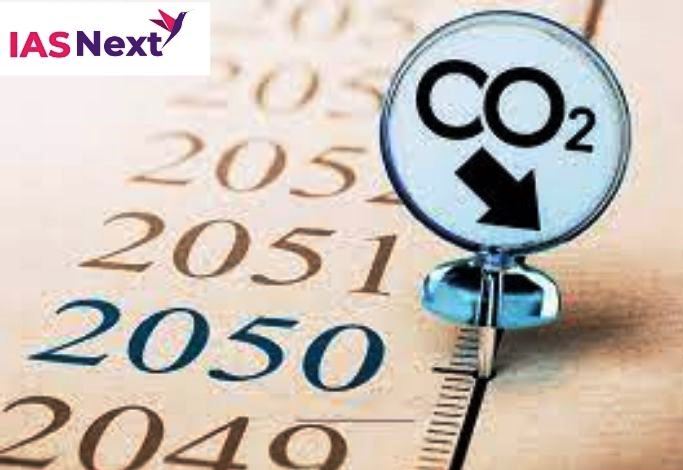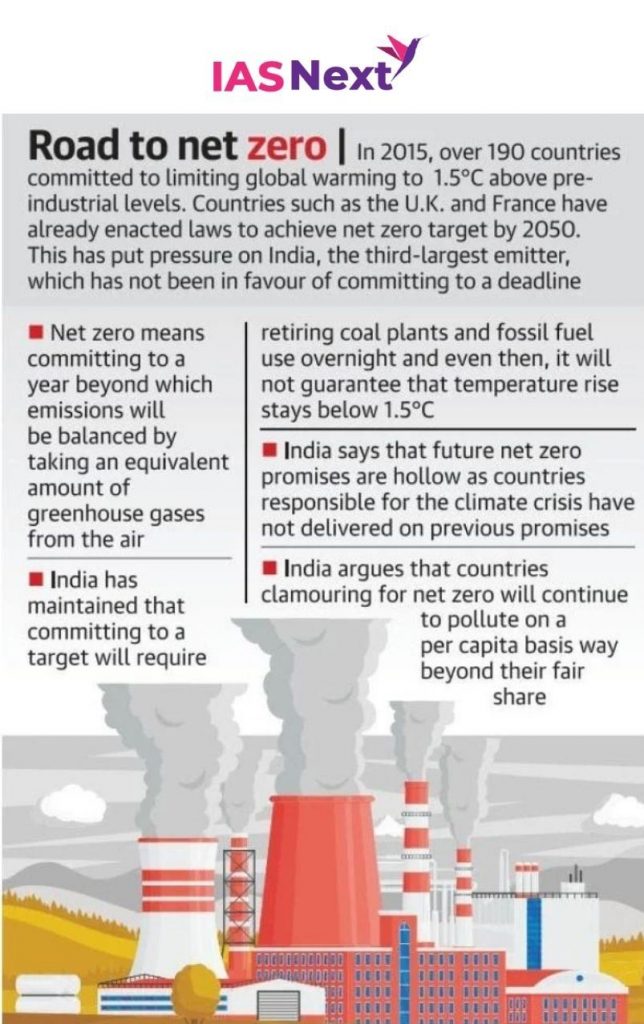CURRENT AFFAIRS
Get the most updated and recent current affair content on Padhaikaro.com
‘Net zero’ feasibility for India:
- IAS NEXT, Lucknow
- 25, Oct 2021

The 26th meeting of the United Nations’ Conference of Parties (CoP) will begin on November 1 in Glasgow.
- Ahead of this meet, the focus on making the meet a success is to have all nations commit to a 'net zero', or a year by when a country’s fossil fuel emissions would peak and at some point be neutralised by taking out excess carbon from the atmosphere.

Need for ‘net zero’ emissions:
All countries doing this by 2050, scientists say, would mean a chance of restricting average temperature rise to 1.5 Celsius provided emissions fall to around 45% of 2010 levels by 2030.
Challenges for India:
- Achieving ‘net zero’ means deep and significant cuts to fossil fuel use that could affect the development trajectory of India and other developing countries.
- For India to achieve a net-zero target by 2070, usage of coal especially for power generation would need to peak by 2040 and drop by 99% between 2040 and 2060.
- And, the consumption of crude oil across sectors would also need to peak by 2050 and fall substantially by 90% between 2050 and 2070.
What has been India’s stand so far?
- India has always maintained that it will cut down the use of fossil fuel use but only gradually because it cannot compromise on development, that is now primarily reliant on coal.
- Also because it goes against the core principle of ‘common but differentiated responsibility’ that requires developed countries, who are responsible for the climate crisis, to take on deeper cuts and pay developing countries for the environmental damage from rising temperature as well as finance their transition to clean energy sources.
Alternatives before India:
Even if India cannot announce a net zero target, it might update it’s Nationally Determined Contributions (NDC), or announce a firmer set of commitments that could include higher clean-energy targets or reductions in specific categories of emissions.
India’s INDC:
India last announced its NDCs in 2015 in which it committed to increasing the share of non-fossil fuel sources to 40% and reduce its emissions intensity per unit of GDP by nearly 33-35% of 2005 levels and create a carbon sink of 2.5-3 billion tons of CO2 equivalent.
What needs to be done?
Developed nations should make good on previous commitments, such as an annual $100 billion to developing countries for mitigating the impacts of climate change, facilitating technology transfer and putting in place a tangible market-based mechanism to activate the moribund carbon credit markets.